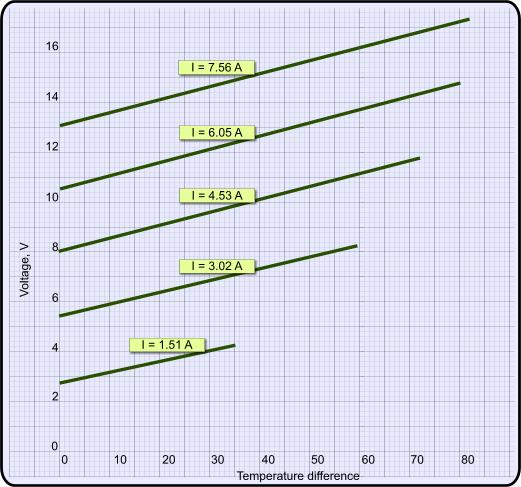Hello Everyone
A brilliant idea came to me recently to use the Peltier heat pump as a heater: Thermoelectric effect - Wikipedia, the free encyclopedia

There are at least two advantages to resistive heating using this method:
1- In addition to resistive heating, it also pumps heat from the environment.
2- Most important of all the pumped heat is directly related to the current supplied, unlike the normal resistive heating elements which are related to current squared.
So what does this mean? it means that if we use two of these devices in series, the pumped heat would remain the same! Although the current is halved, the pumped heat in each of them is halved, But the total pumped heat is the same. This is not possible with resistive heating.
Now consider this as an example:
We have a Peltier device which upon applying 12V consumes 4A and pumps Q amount of heat. Now if we get N such devices and stack them in series, the current draw would be 4/N and the pumped heat would be N * Q/N = Q and the same! If you place N = 10, this means that you can pump the same heat by using 10 of such devices, which use only 0.4A of current (P=12*0.4) and depending on the money you want to spend, you can add as much as these devices in series. Even if you double the voltage thus making the total devices pump 2 * Q amount of heat you are still using less power (24* 0.8 = 19.2W) than a single Peltier device pumping Q amount of heat (12*4=48W).
So have we got a very efficient heat pump design here? The formulas tell so, but I don't really know, and experimentation would tell.
Note: A Peltier device is a device which two different metals are joined together, when applying current to the device heat is generated or absorbed, depending on the direction of current. The pumped heat is directly related to the current applied.

This might even result as a very efficient cooler.
What do you think?
Elias
A brilliant idea came to me recently to use the Peltier heat pump as a heater: Thermoelectric effect - Wikipedia, the free encyclopedia

There are at least two advantages to resistive heating using this method:
1- In addition to resistive heating, it also pumps heat from the environment.
2- Most important of all the pumped heat is directly related to the current supplied, unlike the normal resistive heating elements which are related to current squared.
So what does this mean? it means that if we use two of these devices in series, the pumped heat would remain the same! Although the current is halved, the pumped heat in each of them is halved, But the total pumped heat is the same. This is not possible with resistive heating.
Now consider this as an example:
We have a Peltier device which upon applying 12V consumes 4A and pumps Q amount of heat. Now if we get N such devices and stack them in series, the current draw would be 4/N and the pumped heat would be N * Q/N = Q and the same! If you place N = 10, this means that you can pump the same heat by using 10 of such devices, which use only 0.4A of current (P=12*0.4) and depending on the money you want to spend, you can add as much as these devices in series. Even if you double the voltage thus making the total devices pump 2 * Q amount of heat you are still using less power (24* 0.8 = 19.2W) than a single Peltier device pumping Q amount of heat (12*4=48W).
So have we got a very efficient heat pump design here? The formulas tell so, but I don't really know, and experimentation would tell.
Note: A Peltier device is a device which two different metals are joined together, when applying current to the device heat is generated or absorbed, depending on the direction of current. The pumped heat is directly related to the current applied.

This might even result as a very efficient cooler.
What do you think?
Elias
 , this guy is almost there
, this guy is almost there

Comment